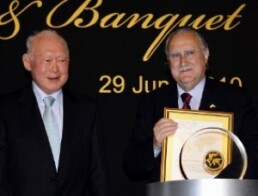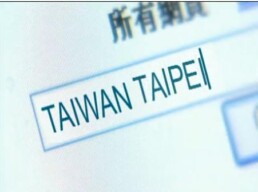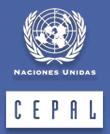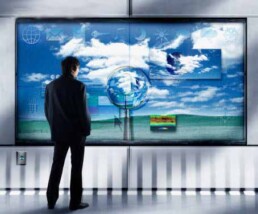Bilbao receives in Singapore the Lee Kuan Yew World City Prize
The prize-giving took place in the Framework of the events organized on the occasion of the World Cities Summit 2010 (WCS) held in Singapore until Thursday.
The Mayor of Bilbao, Mr. Iñaki Azkuna receives in the name of the City the First Lee Kuan Yew World City Prize, considered as the "Nobel Prize" For the cities. The prize-giving is part of the events organized on the occasion of the World Cities Summit 2010 (WCS) that will be held until Thursday in Singapore, an international event, centred in issues such as leadership and urban management, besides the construction of sustainable cities, respectful with the environment and the adoption of harmonious and sustainable communities.
The prize-giving of the Lee Kuan Yew World City Prize and the Gala dinner that will be offered to the 1.000 international delegates that take part of the World Cities Summit 2010 (WCS) will be held under the presidency of Singapore´s Mentor Minister, Mr. Lee Kuan Yew.
The Lee Kuan Yew World City Prize recognizes the leadership capacity of Bilbao´s City Council to bring together the different visions and strategic objectives of institutions and public and private organisms in the transformation process of the City, through the institutional Society Bilbao Ría 2000.
Organized jointly by the Urban Redevelopment Authority (URA) of Singapore and the Centre for Liveable Cities (CLC), the Lee Kuan Yew World City Prize is centred in 4 key elements: the habitability, the vitality, the sustainability and quality of life.
Bilbao has obtained this First Lee Kuan Yew World City Prize competing against 78 candidate cities from all over the world. The selection process was made in at two levels, through a Candidatures Committee and a Prize Committee. Both juries were particularly impressed by what Bilbao has achieved in a short period of time of 25 years, regarding the improvement of the environment and the quality of life, the social cohesion, the cultural dynamism and the economic competitiveness.
A small exhibition space prepared on the occasion of the World Cities Summit 2010 (WCS) shows the urban transformation process of Bilbao and the other three finalist cities of the Lee Kuan Yew World City Prize: Melbourne (Australia), Curitiba-Paraná (Brazil) and New Delhi (India).
The City of Taipei shares with the members its experiences
Following the objectives established for the Committee of sharing knowledge the City of Taipei shares with it experiences related to ICT, innovation and knowledge.
Within the scope of the "Framework Plan to Build Taipei as an Intelligent City", Taipei City has strived to formulate and implement various projects based on three primary strategies-e-Government, e-Community, and e-Life. For instance, they have focused on "developing an intelligent Taipei" by establishing the wireless network, promoting wider EasyCard and mobile service applications, carrying on with the Intelligent Transportation Systems (ITS), expanding the 1999 Citizen Hotline, establishing the single-window service to handle complaints, and introducing the Resident Healthcare Project as well as the "Fiber to the Home" (FTTH) service. With such endeavors like fiber optic communications, they aim to boost Taipei City´s competitive edge and realize the vision of "quality life in an intelligent city" and UI-Taipei (a ubiquitous and intelligent Taipei).
The experiences are accessible in the TV Channel of the Committee with the videos: UI Taipei "Ubiquitous & Intelligent" and Taipei Citizen Health & Living Care "Taipei Telecare Program". To see the videos follow the link:
http://www.youtube.com/user/CDCdeCGLU
We encourage you to send your experiences by contacting the Secretariat of the Committee: bilbaonext.promocion@ayto.bilbao.net
Cidades digitais, um mercado promissor
Aos poucos, vários prefeitos estão se interessando em usar a TI para melhorar a gestão de municípios e a prestação de serviços à população
A tecnologia da informação tem um novo papel a cumprir no mundo. Após impulsionar o trabalho de cientistas, renovar os negócios de empresas e, recentemente, mostrar seu valor social e colaborativo, é hora de ajudar as cidades ao redor do mundo a entrarem no novo século, de uma forma moderna e conectada. Estamos ainda vivendo o embrião desse movimento que conta com boas perspectivas, mas há quem o imagine como uma renovação sem precedentes da gestão pública, com a consolidação de todas as teorias sobre sociedade da informação e até mesmo um novo aquecimento de mercado comparável ao Bug do ano 2000.
Esse fenômeno - e mesmo sua definição de espectro - ainda está indefinido. O termo mais usado é cidades digitais. Mas, há quem utilize cidades inteligentes e e-cities. A diferença está no tamanho da revolução que a tecnologia proporciona e na abrangência da estratégia do gestor público. Essencialmente, trata-se de uma comunidade capaz de se relacionar por meio de infraestrutura de banda larga confiável, com serviços inovadores aos cidadãos, que consegue equalizar desenvolvimento com educação e ainda tem agilidade para se modernizar ainda mais. Ou seja, estamos falando de uma ótima cidade para se viver nesses tempos de celulares, Internet e comunicação digitalizada.
No Brasil, o movimento de cidades digitais é consistente, embora não se saiba quantos dos 5.564 municípios brasileiros podem ser enquadrados nessa nova onda. Existem entre 50 e 60 casos conhecidos. Acredita-se que existam ainda mais regiões capazes de entrar nessa lista. Há muitas prefeituras que se entusiasmaram com o conceito e estão procurando empresas que possam ajudá-las a entrar nesse novo mundo conectado.
"Estamos com 30 projetos de cidades do Piauí que querem se tornar digitais", aponta o diretor técnico da Safetway, uma revenda Motorola situada em Teresina, Reginaldo Marreiros. A maioria deve vingar nos próximos meses. Os prefeitos ficaram interessados depois que Parnaíba, situado no litoral do Estado e com 150 mil habitantes, implementou o programa de cidade digital.
O município é o segundo mais populoso do Estado e, historicamente, tem a economia dependente da extração de recursos naturais e de algumas indústrias de alimentos e perfumaria. Contudo, as belas paisagens têm elevado o interesse turístico na região, e a presença de uma universidade estadual, uma federal e várias faculdades tem transformado a cidade em pólo educacional. Assim, com a economia em transformação, o município precisou se modernizar.
O primeiro passo da digitalização de Parnaíba foi a implementação de uma infraestrutura de banda larga wireless para interligar os prédios públicos, serviços de atendimento e sistemas de saúde e segurança. Após a finalização desse processo, mais de 100 escolas receberam conexão à internet, para uso dos alunos em sala de aula e também para o aperfeiçoamento dos professores e a melhora na troca de dados entre os órgãos educacionais. "Tivemos de montar uma estrutura sem fio porque não havia banda larga cabeada confiável, o único serviço existente fornecia apenas 300Kbps", explica Marreiros.
O projeto foi realizado com plataforma de banda larga sem fio da Motorola, que criou um backbone de internet em uma área de 16 quilômetros em torno de uma torre central. A conexão foi posteriormente expandida com uma rede WLAN (Wireless Local Area Network), que utiliza portas de acesso e switches sem fio distribuídos por sete pontos remotos. Com isso, o acesso ficou garantido para a população e turistas em vários pontos, como o Aeroporto Internacional João Silva Filho, Terminal Rodoviário Interestadual, Praça de Eventos, Universidades Federal e Estadual do Piauí, Centro Federal de Educação Tecnológica (Cefet) e Porto das Barcas.
A segunda fase prevê a instalação de câmeras de vigilância que transmitirão as imagens para uma central da Guarda Civil Municipal. Além disso, está prevista a conexão de todo o sistema público de saúde à rede, o que favorecerá a população no agendamento de consultas e no levantamento de histórico clínico dos pacientes. O projeto também prevê o desenvolvimento de bibliotecas virtuais nas instituições de ensino, além da criação de telecentros.
Primeiros passos no mundo digital
Em geral, esse tem sido o caminho adotado por prefeituras que querem se tornar cidades digitais. "Antes de tudo, elas querem uma banda larga confiável para interligar as entidades operacionais públicas e melhorar a troca de informações e a gestão", destaca o gerente da área de Governo e Empresas da Motorola, Joeval Martins.
Posteriormente, ganham prioridade os planos de inclusão digital e melhoria do sistema educacional. Em uma terceira etapa, começam a surgir novos serviços à população. Tudo isso dentro de um ambiente digital. "Com o tempo, os prefeitos entendem que a rede é apenas um meio e começam a inovar", diz Martins.
O projeto de Parnaíba foi inspirado pelo pioneirismo de Macaé (RJ), considerada por muitos a cidade mais digitalizada do Brasil. Neste município carioca, que tem se desenvolvido devido à indústria do petróleo e possui cerca de 200 mil habitantes, o caminho da modernização digital começou com a interligação de 27 prédios da municipalidade por meio de uma rede sem fio WiMesh.
A ampliação do projeto alcançou os postos e a Secretaria de Saúde, bem como cinco praças da região e distritos vizinhos. A rede sem fio de alta velocidade gerou inovações impensáveis anteriormente. O município conta atualmente com uma espécie de telemedicina no sistema de saúde. "Por meio de um celular com câmera, um agente de saúde pode mandar uma imagem de um paciente para que um médico avalie a situação remotamente", explica o diretor da revenda Jevin, Guilherme Cunha, que implementou o projeto na cidade.
Nos últimos meses, Macaé tem implantado o Ofício Digital. O software desenvolvido pela Secretaria de Ciência e Tecnologia é utilizado por 395 usuários espalhados por 146 unidades administrativas. O sistema auxilia na criação e no envio de documentos oficiais, além de facilitar a recuperação desses dados.
Mas, as cidades digitais podem chegar ainda mais longe. Em Cingapura, um sistema inteligente de previsão de tráfego é utilizado para priorizar o uso de transporte coletivo e melhorar o trânsito em horários de pico. Sensores e câmeras se comunicam com um software que controla a abertura de semáforos e facilita a passagem das vias que possuem mais ônibus e estão mais carregadas. Os cidadãos contam ainda com um bilhete que permite utilizar estacionamentos, trens, ônibus e taxis. Os dados são gerenciados pelo governo.
Em Malta, um pequeno arquipélago no Mediterrâneo, sensores e softwares ajudam o governo a economizar energia. O país possui diversas fontes energéticas e, de acordo com a demanda, o sistema direciona o consumo para que a prioridade seja dada para as alternativas mais limpas e sustentáveis. A tecnologia também evita apagões, usando a inteligência digital para evitar cortes repentinos por excesso de carga.
Um mundo a ser explorado
Ambos os projetos têm o dedo da IBM, que também aposta no crescimento desse mercado. No Brasil, a gigante de tecnologia está conversando com várias cidades que serão sedes da Copa do Mundo de futebol de 2014 e que já preveem a necessidade de infraestrutura de banda larga total e controles mais eficientes na administração com o fluxo de turistas e o desenvolvimento econômico propiciados pelo evento. "Os problemas atuais das cidades não serão resolvidos sem tecnologia e os prefeitos começam a perceber isso", aponta o diretor de cidades inteligentes na IBM, Pedro Almeida.
Para ele, essa onda abre várias oportunidades para o mercado de tecnologia, que anda desconfiado quanto à estagnação do segmento corporativo. "Há espaço para a venda de hardware, conexão, softwares e serviços, exatamente como já ocorreu anteriormente com as empresas", diz. Para a IBM, a expectativa é de um novo boom comercial, embora não se saiba se o comportamento será idêntico à demanda no Bug do milênio ou um pouco mais esparso, devido à falta de cultura no uso de tecnologias por gestores públicos e ao excesso de burocracia que costuma interferir nos negócios com governos.
Se a velocidade das compras é desconhecida, por outro lado, há certezas sobre as possibilidades de negócio. "São tecnologias já conhecidas, que estão à disposição e já são testadas e aprovadas", comenta o diretor de gestão pública do CPqD, Renato Stucchi. Para ele, a criação de cidades inteligentes tende a ser em etapas e pode demorar de 8 a 12 anos, mas há uma vantagem. "Como esse movimento está ocorrendo agora, os municípios serão pressionados ao mesmo tempo por todas as ondas de tecnologia que já foram passadas, como sistemas de gestão, Internet, celulares e redes sociais", afirma.
E o futuro é imprevisível. No começo, com infraestrutura de banda larga cabeada ou wireless, esses municípios podem mesmo serem enxergados como apenas administrações digitais. À medida que a integração aumenta, no entanto, a população começa a participar dessa evolução e uma cidade digital começa a se formar. "A criação de novas aplicações para fornecer serviços inovadores começa a mudar o perfil para cidades inteligentes e isso levará, sem dúvida, às cidades sustentáveis", prevê o diretor de desenvolvimento de novos negócios da Cisco, Rodrigo Uchôa. Todo esse desenvolvimento baseado no uso de tecnologia e na esperança que, além de cidades inteligentes, possamos contar com políticos inteligentes também.
Source: por Gilberto Pavoni J. | Especial para CRN Brasil http://www.resellerweb.com.br/noticias/index.asp?cod=68387
Mobile Internet will overtake desktop in 5 years
Nearly half part of the Internet users, 48% are concentrated in five countries, one of which is Brazil with 67 million users and a growth of 14% last year. The country with the largest number of users and the strongest growth in the last year was China with 384 million users and a growth of 29%. This not only confirms the strength of emerging markets and the role that economies such as Brazil will have in the XXI century.
The rapid adoption of the iPhone and its exponential growth in number of users has been a key factor in the launch of Internet use via mobile. In just three years after its launch, iPhone + iTouch users exceeded 11 orders of magnitude the total users of AOL from 1994 to today. According to Morgan Stanley in 2014 users and use more mobile Internet access to any device fixed.
And the number of users of social networks is already higher than those using e-mail from July of 2009.
As reported by Stanley, we are in the 6th technological cycle of the past 50 years. After Mainframes (1960s), the miniComputing (1970s), the era of personal computers (1980s), "Internet Computing Desktop" (1990s) and the Mobile Internet era (2000s), we enter the era of real explosion Mobile Internet use is characterized by: more processing power, improved user interface devices smaller, cheaper, explosion of services and a variety of devices (more than 10 billion devices connected in the world in 2020). The devices have undergone a tremendous evolution over the past 30 years (we all remember the screens of the mainframe or AS/400). Now they are "touch" themselves are controlled by fingers (before mice and keyboards) and used for something more than simple communication: to consume content and applications of all kinds.
The mobile broadband enabled by 3G and its evolution will be the facilitator of this. According to MS the global turning point for the start of the 6th was precisely the year 2010 which will exceed 1000 million 3G users worldwide, representing a 21% global penetration.
Internet use has changed. Social networks and video leading the trend. Users of social networks in the world and to reach 850 million (with an annual growth of 32%) and what is more important, have doubled the number of minutes users spend on them by 50% from prior year . Facebook has 471 million users, having doubled their numbers in just 1 year.
Most important of all is that every time the user will have more value in a single integrated communications device, calendar, games, messaging, videos, music etc. .. and that this device is a mobile.
The use of internet video will grow by 131% (2009-2014) representing 69% of the total data that are moved by the Network in 2014.
Internet use in Apple or Android devices is much greater than in the rest of Smartphones indicating that war device is configured between two, displacing Symbian, RIM or Windows itself.
The proliferation of mobile applications and monetization is also growing. Some mobility-related features such as:
- Location-based services for finding the services / products we buy in the area where we are.
- The price comparisons on-line and when it will be a competitive advantage for mobile purchases compared to traditional shopping.
- Discount due to cost savings of online.
- The immediate release of the product we buy will make mobile Internet purchases have disruptive characteristics compared to traditional shopping.
In short, we are left with three ideas:
- The mobile will be the leader of the digital future,
- The video will be the main causanete the exponential growth of data traffic on the Net
- The consumer Internet habits will change drastically by the appearance of mobile provides specific parameters and intrinsic.
Do we want to lead it?
Gema Esteban
Source: Fundación Telefónica
Cepal launches online consultation and information technologies
Sunday June 13, 2010 | | NLD Animus
A new digital agenda for Latin America and the Caribbean, which give guidelines for the development of information technology and communications, you´re looking to get the Economic Commission for Latin America (Cepal) through an electronic consultation organized mass by Information Society Programme.
The online survey, which can satisfy all stakeholders until 16 July, addressed 10 topics among which broadband access, electronic government and Internet legal framework. "Our consultation is to collect sensitive, opinions and proposals of all persons in the public or private, interested in the policies of the information society. Thus, to generate a regional action plan to reduce poverty, inequality and social exclusion, "said Anna Garcia, communications coordinator for the Information Society Programme of Cepal.
Garcia explained that the submissions received through the survey will be transformed into a work that will be presented at the Third Ministerial Conference of the Information, to be held in November in Lima, Peru. "At the conference, the countries will take our work to reach a consensus on information and technology plans, and from this, proposed future guidelines for each country in this field.´s Why it´s important that everyone vote," adds coordinator. To vote, follow this link
Source: The Nación.cl
Singapore And China To Develop e-City In Tianjin
Senior Minister of State Grace Fu and Tianjin Vice Mayor Ren Xuefeng co-chair third Singapore-Tianjin Economic and Trade Council meeting in Singapore today and witness four project signings, three of which involve the Sino-Singapore Tianjin Eco-City.
In line with Tianjin´s plans to transform into a digitally-connected city and develop its services sectors, infocomm technology (ICT) and modern services will be the key areas of focus for Singapore-Tianjin economic collaboration.
At the third Singapore-Tianjin Economic and Trade Council (STETC) meeting held in Singapore today, both sides agreed to work closely on adopting ICT to develop Tianjin as an e-City, as well as to explore modern services, such as "Meetings, Incentives, Conventions and Exhibitions" (MICE) and retail services.
The meeting was co-chaired by the Vice Chairmen of the STETC, namely Senior Minister of State (SMS) for National Development and Education Grace Fu, and Tianjin Vice Mayor Ren Xuefeng. The Co-Chairmen for the council are Minister for National Development Mah Bow Tan and Tianjin Mayor Huang Xingguo, with International Enterprise (IE) Singapore as the Singapore secretariat for STETC.
Said SMS Fu, "This is the third year since the Council was established and we have seen good progress in bilateral economic collaboration. This includes the Sino-Singapore Tianjin Eco-city and projects spanning various sectors such as environmental services, hospitality, vocational and technical education (VTE), and more. We hope to continue to partake in growth sectors aligned to Tianjin´s development plans and offer not just our consultancy expertise, but project management capabilities as well. The council has identified two key areas to work on for the new coming year, namely leveraging ICT to develop an e-City, and modern services. These are areas that Singapore companies have strong abilities in."
Following the meeting, SMS Fu and Vice Mayor Ren witnessed four company/association project signings:
- MICE - MOU between Singapore Association of Convention and Exhibition Organisers and Suppliers (SACEOS) and Tianjin International Convention & Exhibition Association to collaborate in expertise exchange, manpower training and organisation of international events.
- Sino-Singapore Tianjin Eco-City - Land Use Rights Transfer Agreement signing between Sino-Singapore Tianjin Eco-City Investment and Development Co., Ltd. (SSTEC) and Sichuan Neautus Traditional Chinese Medicine.
- Sino-Singapore Tianjin Eco-City - Land Use Rights Transfer Agreement signing between SSTEC and Singapore´s Pan Asian Water Solutions.
- Sino-Singapore Tianjin Eco-City - MOU signing between SSTEC and Singapore´s Broadway Industrial Group.
Vice Mayor Ren is in town for a three-day visit from 8 - 10 June 2010 with a 35- strong delegation comprising government and business representatives. They will be visiting various Singapore companies to learn more about Singapore´s maritime and port industry, water and wastewater management, real estate and more.
Fast growth of Tianjin presents opportunities in modern services
In 2009, Tianjin´s GDP was ranked sixth in China, after the cities of Shanghai, Beijing, Guangzhou, Shenzhen and Suzhou. Among these, Tianjin´s GDP growth was the highest at 16.5%. Tianjin´s GDP per capita also reached a relatively high figure of US$8,388 (+ 5%) in 2009, which was close to Beijing´s GDP per capita of US$10,0701. It also saw strong growth in the first quarter of 2010, with GDP at RMB 184.24 billion, an increase of 18.1% compared to the same period last year.
In addition, Tianjin was ranked sixth behind the cities of Hong Kong, Shenzhen, Beijing, Shanghai and Guangzhou in a study on the competitiveness of cities in China by the Chinese Academy of Social Sciences. In the same study, Tianjin was assessed to have the greatest potential for growth in the next 10 years. The above point to the fast growth and business potential of this municipality.
In January this year at the Tianjin Government Work Report2 sharing, Mayor Huang Xingguo highlighted the ten areas that the city is focusing on for 2010.
One of them is the development of the services industry, which plays an important role in economic transformation and restructuring, as well as improving the city´s competitiveness.
With Tianjin´s direction to focus more efforts in services across sectors such as tourism, financial services, logistics, hospitality and more, Singapore companies can come in to offer relevant expertise. The fact that our services sectors accounted for 69% of our GDP in 2009 (at current prices) reflect the importance of services to Singapore and our companies´ capabilities.
Building on close collaboration in tourism and VTE last year, other areas to partner include MICE and retail services.
Adopting ICT to develop Tianjin into an e-City
Singapore companies are also well equipped to offer ICT services and solutions for Tianjin to enhance its business and living environment as a digitally connected city. Singapore has adopted a close private-public partnership approach in its ICT journey, which has since played a significant role in transforming Singapore into a high-tech economy today, creating ease for both the business and social communities.
Singapore companies have developed domain expertise and experience in designing and implementing solutions that can be applied and integrated in various industries, including healthcare, financial services, transport, education and more. Examples include our integrated clinic management system, electronic road pricing system, CitizenConnect, etc.
Therefore, there is much potential in ICT collaboration as Tianjin seeks to become an e-City.
From January - April 2010, bilateral trade between Singapore and Tianjin amounted to US$0.3 billion, a decrease of 10% over the same period in 2009.
In 2009, bilateral trade amounted to US$1.73 billion, of which exports to Tianjin accounted for US$0.96 billion while imports from Tianjin accounted for US$0.77 billion. (Source: Tianjin Commission of Commerce)
From January - April 2010, Singapore´s actual foreign direct investments (FDI) in Tianjin hit US$0.19 billion with eight projects.
As of end April 2010, Singapore´s cumulative actual FDI in Tianjin amounted to US$3.32 billion with a total of 707 projects. In 2009, Singapore was Tianjin´s fifth largest investor. (Source: Tianjin Commission of Commerce)








